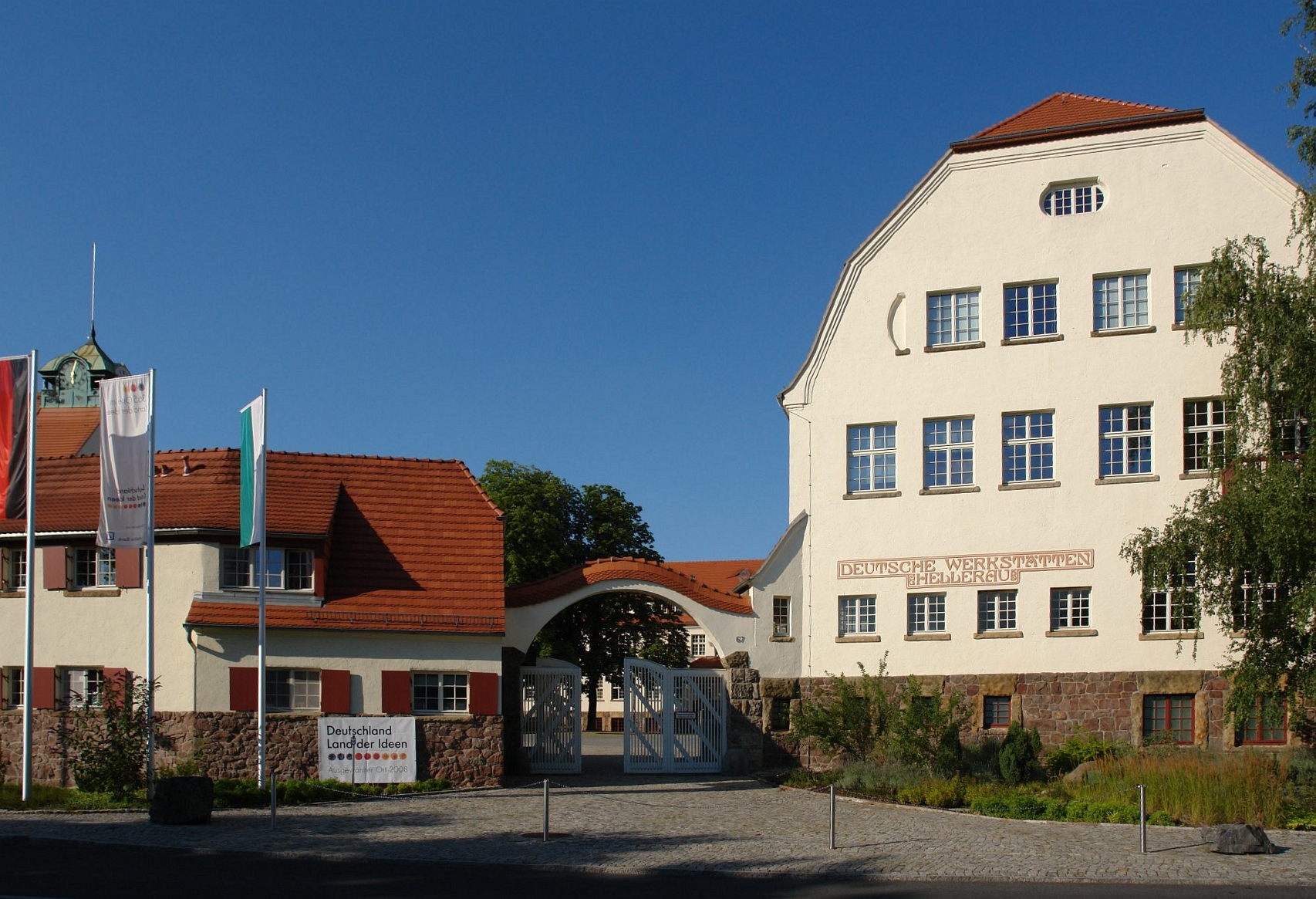Deutsche Werkstätten Hellerau on:
[Wikipedia]
[Google]
[Amazon]
The Deutsche Werkstätten Hellerau is a medium-sized furniture-manufacturing business in the 
 At the beginning of the 21st century, Deutsche Werkstätten Hellerau employed over 200 people worldwide, with foreign subsidiaries and sales representatives in England and France.
At the beginning of the 21st century, Deutsche Werkstätten Hellerau employed over 200 people worldwide, with foreign subsidiaries and sales representatives in England and France.
Deutsche Werkstätten
– Official website
– Official website - historical timeline
Rustic Furniture
Manufacturing companies established in 1898 Furniture companies of Germany Manufacturing companies based in Dresden Volkseigene Betriebe 1898 establishments in Germany {{Germany-company-stub
Hellerau
Hellerau is a northern quarter ''(Stadtteil)'' in the city of Dresden, Germany, slightly south of Dresden Airport. It was the first garden city in Germany. The northern section of Hellerau absorbed the village of Klotzsche, where some 18th cent ...
district of the German city of Dresden
Dresden (, ; Upper Saxon: ''Dräsdn''; wen, label=Upper Sorbian, Drježdźany) is the capital city of the German state of Saxony and its second most populous city, after Leipzig. It is the 12th most populous city of Germany, the fourth larg ...
. The company archives are deemed a valuable cultural asset and were provided with legal protection.

Company history
The workshops were founded October 1, 1898 byKarl Schmidt-Hellerau
Karl Camillo Schmidt-Hellerau (1 February 1873 – 6 November 1948) was a German carpenter, furniture manufacturer and social reformer. He was born in Zschopau, and is notable as the founder of Hellerau
Hellerau is a northern quarter ''(Stad ...
(1873-1948) under the name Dresdner Werkstätten für Handwerkskunst Schmidt und Engelbrecht, or Schmidt and Engelbrecht Dresdner workshops for craftsmanship. His partner
In 1898-1899 Karl Schmidt-Hellerau and Johann Vincenz Cissarz developed a closet using plywood panels. They continued developing the technique of using plywood. In 1941, they received a patent for thermally tempered wood.
In 1907, Karl Schmidt-Hellerau established an industrial technical school and training workshops. Its first head was Joseph August Lux.
The cornerstone of a new factory was laid in 1909 in what is today Dresden-Hellerau at the same time as work began on the garden city of Hellerau
Hellerau is a northern quarter ''(Stadtteil)'' in the city of Dresden, Germany, slightly south of Dresden Airport. It was the first garden city in Germany. The northern section of Hellerau absorbed the village of Klotzsche, where some 18th cent ...
. Following the commissioning of the new production hall, the company moved there in 1910. At the time, the firm occupied 450 employees.
Despite the severe global economic crisis in 1929, the years of National Socialism and the devastation of the Second World War and the socialist planned economy in the GDR, the company has endured. In 1967 the workshops began mass production of the Möbelprogramm Deutsche Werkstätten (MDW), a modular system developed by Rudolf Horn which remained in production for 24 years. Starting in 1970 Hellerau was the main plant of the Volkseigener Betrieb
The Publicly Owned Enterprise (german: Volkseigener Betrieb; abbreviated VEB) was the main legal form of industrial enterprise in East Germany. They were all publicly owned and were formed after mass nationalisation between 1945 and the early 1960 ...
Möbelkombinat Hellerau, an industrial grouping of furniture producers of East Germany.
Following reunification
A political union is a type of political entity which is composed of, or created from, smaller polities, or the process which achieves this. These smaller polities are usually called federated states and federal territories in a federal governm ...
in 1991, the company was transformed into a GmbH in 1992
File:1992 Events Collage V1.png, From left, clockwise: 1992 Los Angeles riots, Riots break out across Los Angeles, California after the Police brutality, police beating of Rodney King; El Al Flight 1862 crashes into a residential apartment buildi ...
and privatized by the Treuhand
The ("Trust agency"), colloquially referred to as , was an agency established by the government of the German Democratic Republic to reprivatise/ privatise East German enterprises, Volkseigene Betriebe (VEBs), prior to German reunification. C ...
. It then employed 80 people, with a focus on fulfilling public sector procurement.
 At the beginning of the 21st century, Deutsche Werkstätten Hellerau employed over 200 people worldwide, with foreign subsidiaries and sales representatives in England and France.
At the beginning of the 21st century, Deutsche Werkstätten Hellerau employed over 200 people worldwide, with foreign subsidiaries and sales representatives in England and France.
Social Commitment
During his years in England, Karl Schmidt-Hellerau became familiar with the idea of the garden city. In reaction to the conditions of worker's housing inDresden
Dresden (, ; Upper Saxon: ''Dräsdn''; wen, label=Upper Sorbian, Drježdźany) is the capital city of the German state of Saxony and its second most populous city, after Leipzig. It is the 12th most populous city of Germany, the fourth larg ...
, he decided together with other people, among them Friedrich Naumann, to build Germany
Germany,, officially the Federal Republic of Germany, is a country in Central Europe. It is the second most populous country in Europe after Russia, and the most populous member state of the European Union. Germany is situated betwe ...
's first garden city. This was accomplished in 1909.
Awards
*Three bronze medals at the Paris World Fair in 1900 *Awards at the Universal Exhibitions of 1904 in St. Louis and 1937 in Paris.References
External links
Deutsche Werkstätten
– Official website
– Official website - historical timeline
Rustic Furniture
Manufacturing companies established in 1898 Furniture companies of Germany Manufacturing companies based in Dresden Volkseigene Betriebe 1898 establishments in Germany {{Germany-company-stub